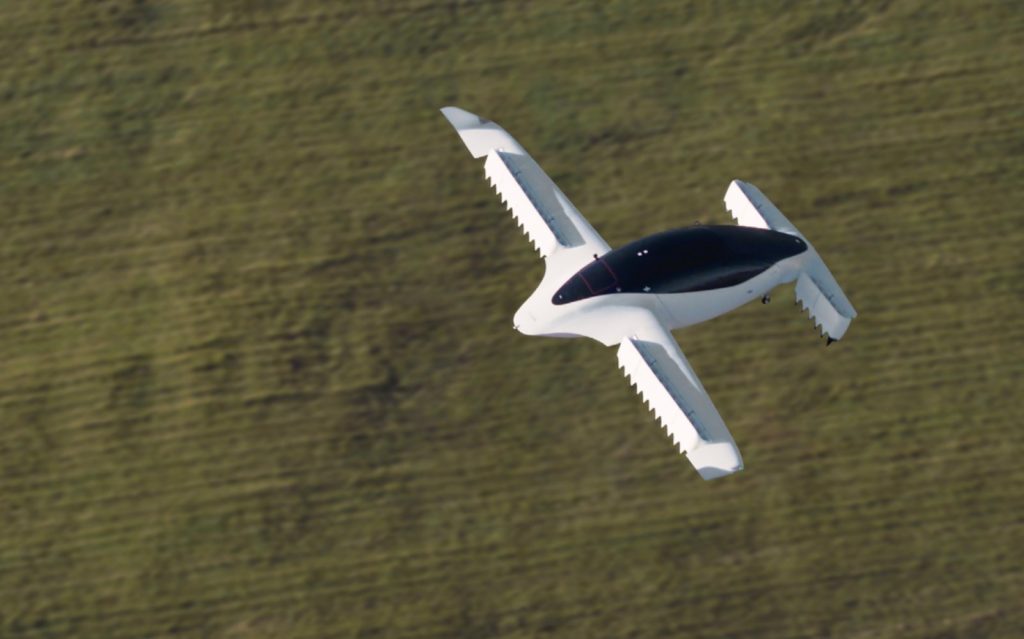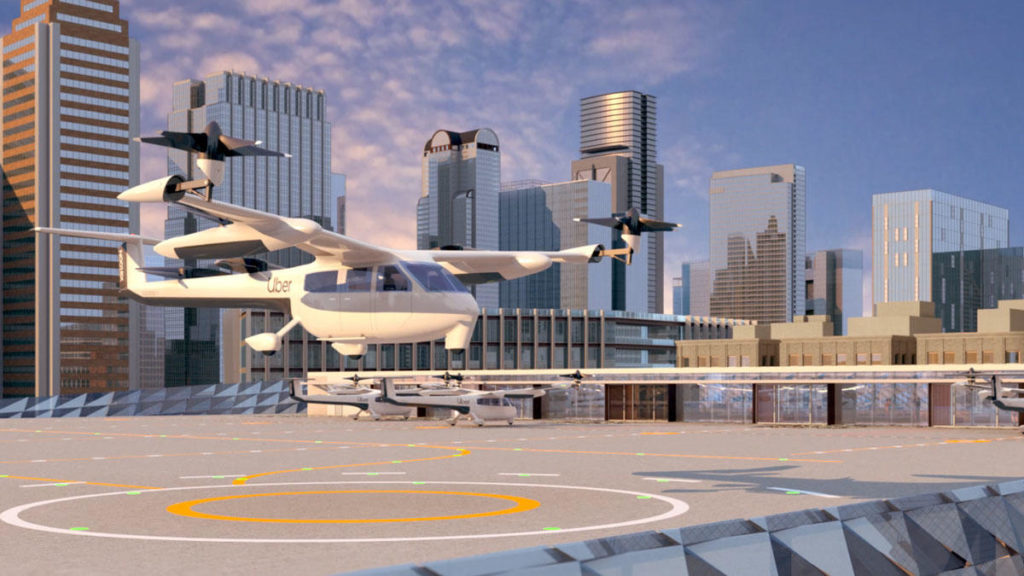Ohio, with its storied history in the field of human flight, would seem the perfect place for research in the next bold step in air transportation – autonomous flight. This next breakthrough in air travel, and what is happening in the field in Ohio and worldwide, will be discussed at the upcoming Ohio Urban Air Mobility Symposium. The speakers and panelists at the symposium, which will take place Feb. 27 at the Blackwell Inn and Pfahl Conference Center on Ohio State University’s main campus in Columbus, will offer the latest insights into groundbreaking developments in autonomous flight, energy storage and electrical propulsion.
| Opportunity for schools participating in #STEMdrivesOhio |
Students participating in the #STEMdrivesOhio Design Challenge can attend the symposium with a teacher and share their solutions with innovative industry experts in air mobility. The day will be broken down into two segments for any school participating to present and attend professional panels.
Please indicate which segment of the day you would like to attend by emailing Zac Ames ([email protected]). Following this initial interest email, additional information on the day will be distributed about the events of the day. |
George Valcarcel, an OSU student who has been integral in planning the conference, took time out to share details of the event, including how K-12 students from across the state will present their ideas on smart mobility to conference attendees:
Q: Tell us about your studies at Ohio State University and how you became involved in the Ohio Urban Air Mobility Symposium. Who might benefit from attending?

A: I am a senior at Ohio State majoring in industrial and systems engineering as part of the Integrated Business and Engineering Honors Program. This past summer, I interned with Ascension Global, a small aerospace innovation consultancy based in Washington, D.C. At Ascension, I served government and industry clients on regulatory and business model strategy surrounding urban air mobility technologies. Coming back to Ohio State for my senior year, I felt a desire to give back to the university and the larger community through contributing to the dialogue on air mobility technologies and integration in my home state.
I chose to organize the Ohio Urban Air Mobility Symposium following a brainstorming session with my teacher and mentor, Dr. Liz Newton, the executive director of OSU’s Battelle Center for Science, Engineering, and Public Policy. We believed that a one-day conference to bring together industry, government and academia (including students) would be feasible for me to organize in a few months, and also could drive tremendous impact.
Soon, I found myself pitching the event across my network at Ohio State’s Aerospace Research Center, DriveOhio (the Ohio Department of Transportation’s hub for smart mobility) and JobsOhio (a private, nonprofit corporation designed to foster job creation and capital investment in the state). Each stakeholder saw value in the event, given that air mobility is a relatively new area in which Ohio and OSU are currently involved through a variety of initiatives both in smart cities, electric-autonomous vehicles and aeronautics.
We aligned early on to ensure that we designed a symposium that represented the ways in which the entire state can advance air mobility, in addition to showcasing ongoing efforts. I am proud that the event’s founding coalition members symbolize the cross-disciplinary partnerships required to move the needle on integrating a new mode of transportation and logistics such as air mobility into our community.
Simply put, if you are interested in the leading edge of aviation and aerospace, or even more broadly in the future of sustainable transportation and smart cities, this event is for you!
Q: Help us to understand the phrase “urban air mobility technologies.” What are they, and how are they being used now? What might we see in this field in the future?
A: The term “urban air mobility” (UAM) has grown popular in the aviation industry, but its definition varies across different organizations or regions. The state of Ohio is referring to this emerging domain as “advanced autonomous aircraft technology,” which encompasses the transportation of passengers and cargo through lower-altitude airspace to better connect communities. Often, the flying cars from the animated TV show The Jetsons are used to illustrate this vision of air mobility.
In addition, the “urban” in UAM implies that this is a form of transportation within cities. It is important to note, especially in a market such as Ohio, that these advanced air mobility technologies are being developed to facilitate point-to-point travel between cities and between rural areas and suburbs into larger cities. A relevant example is an air corridor that Ohio is researching for the delivery of medical supplies and human organs for transplant along the Interstate-71 corridor between hospitals in Cincinnati and Cleveland.
Advanced autonomous aircraft technologies closely parallel developments occurring in ground transportation vehicles, notably the trend toward “ACE” – autonomous, connected and electric. The passenger air mobility side is witnessing the emergence of hybrid-electric and electric vertical take-off (eVTOL) and landing jet concepts. These will take off and land like a helicopter, and then transition to forward flight for the majority of the trip. Most eVTOL aircraft concepts under development are designed to carry two to five passengers and are expected to be piloted initially before a certification process exists for fully autonomous flight operations. The benefits of eVTOL over a conventional helicopter include less noise, increased safety, and fewer to no emissions into the environment. These factors make the industry believe that these vehicles can be safely integrated at a large scale and accessible to the wider population.

On the cargo delivery side, small drones are being piloted for tasks such as last-mile package delivery, and larger eVTOL concepts are under development for transporting a higher volume of packages between cities and regions. Progress on all forms of electric aircraft will require continued advances in the energy density of batteries. Major questions remain involving the design of landing infrastructure, traffic management systems, air corridors, collision avoidance systems and a certification basis for innovative vehicle concepts.
 |
 |
Policymakers, planners, industry and researchers will be forced to work together on the air mobility challenge to integrate this new form of transportation into our lives in a manner that is accessible, safe and efficient. Each region and city will need to institute an air mobility system tailored to its local needs and priorities, which is very different from the legacy U.S. commercial aviation system, which is federalized. I believe regulatory lag will be the primary determinant of time to market readiness for air mobility technologies, especially in light of current events such as the Boeing 737 Max grounding by the Federal Aviation Administration and regulators worldwide after two deadly crashes. Having said this, industry is moving toward pilot demonstrations in the mid-2020s, with a goal of scaling operations entering into the 2030s.
Q: What specifically is happening in this field in Ohio?
One of the major initiatives for DriveOhio has been the 33 Smart Mobility Corridor. The goal of this project is to turn a 35-mile stretch of U.S. 33 connecting Dublin and East Liberty through Marysville into a state-of-the-art “smart highway,” which will be used to test autonomous and connected vehicle technologies both on the ground and in the air.
 Last year, DriveOhio and the Springfield-based Ohio Unmanned Aircraft Systems (UAS) Center announced the FlyOhio initiative. FlyOhio has been tasked with coordinating research efforts across public and private partners to ensure that Ohio’s airspace is equipped for the integration of UAS technologies. Ohio State’s Aerospace Research Center has been heavily involved in supporting FlyOhio’s research related to unmanned aircraft traffic management systems, especially along the 33 Smart Mobility Corridor.
Last year, DriveOhio and the Springfield-based Ohio Unmanned Aircraft Systems (UAS) Center announced the FlyOhio initiative. FlyOhio has been tasked with coordinating research efforts across public and private partners to ensure that Ohio’s airspace is equipped for the integration of UAS technologies. Ohio State’s Aerospace Research Center has been heavily involved in supporting FlyOhio’s research related to unmanned aircraft traffic management systems, especially along the 33 Smart Mobility Corridor.
The next step for FlyOhio is to lay out a specific road map for the study and integration of autonomous air taxis and cargo delivery systems. Our Ohio Urban Air Mobility Symposium aligns nicely with FlyOhio’s transition toward focused air mobility efforts. I look forward to using the event to celebrate the progress that Ohio has made to date, and to kick off the exciting work on the horizon for decades to come.
Q: Tell us more about the symposium: Are there particular speakers or panelists whom you are the most excited to hear?
A: As lead organizer, I have assembled a program of panel and keynote speakers designed to give the audience high-level exposure to the key dimensions of the air mobility ecosystem. These discussions include defining air mobility, operational challenges, vehicle technologies and certification, infrastructure planning and zoning, as well as community integration and economic potential.
My favorite part of organizing the event has been leveraging my network, combined with that of my coalition partners at the Ohio Department of Transportation and at Ohio State, to pull together a diverse and highly accomplished set of experts and movers in the air mobility area from across the country.
Q: At the symposium, K-12 students will present smart mobility projects created for the OSLN’s statewide design challenge, #STEMdrivesOhio. How many students are you expecting, and how will their projects be presented?
A: I am thrilled that our event will host more than a dozen K-12 students who are currently participating in the Ohio STEM Learning Network’s statewide design challenge. This year’s design challenge, #STEMdrivesOhio, features student teams working to solve challenges related to smart cities and future mobility.
During our event’s exhibitor showcase, these students will present their teams’ progress on the design challenge to representatives of state and local government, industry and academics who will be attending the symposium. It is incredible to see that K-12 students are already contributing their creative energy and curiosity to tackle problems that are critical to shaping the future of our community, and I hope exposing this future talent to “flying cars” will give these future leaders even greater inspiration.
Q: How can readers find out more about the symposium?
A: More information about the Ohio Urban Air Mobility Symposium can be found on the event website – https://u.osu.edu/ohiouamsymposium/ – including information on speakers, organizing partners, the agenda and how to register. I truly look forward to seeing our community come together to build awareness for, and to consider the critical issues surrounding the future of, air mobility in Ohio.